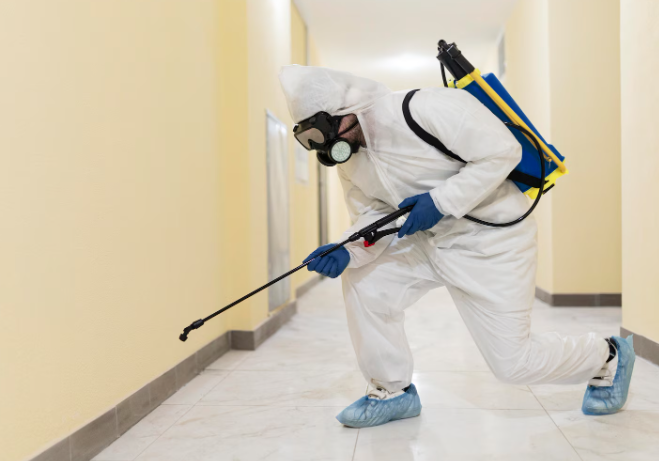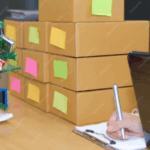Termites are not like most pests. They don’t leave behind obvious messes or scatter across countertops. Instead, they work silently, systematically, and often completely out of sight. That’s what makes them so dangerous—not just in how much damage they cause, but how little attention they attract until it’s too late.
Most homeowners associate termite problems with collapsed wood, hollow walls, or visible mud tubes. But by the time these clues appear, the colony has often been active for years. The real challenge lies in recognizing the hidden signs—those subtle indicators that suggest termites may be quietly eating away at your property from the inside out.
This article takes a closer look at the less obvious, easily overlooked signs of termite activity and why early recognition matters more than most people realize.
Not All Termite Damage Looks Like Damage
Termite destruction rarely starts with dramatic outcomes. More often, it begins with minute changes that don’t raise immediate concern. A squeaky floorboard. A tight-fitting door. A small pile of what looks like sawdust near the baseboard. Each of these on its own may seem harmless. Together, they may be telling a different story.
It’s not about being alarmist. It’s about being observant.
Let’s take a look at the lesser-known red flags you should never ignore.
1. Paint That Bubbles or Peels Without Water Damage
Peeling paint is typically associated with moisture issues, but termites can mimic the same visual effect. As they tunnel just beneath the surface of wood, they disrupt the outer layer, creating pockets that trap air or moisture. The result? Blisters, bubbles, or uneven texture in walls—especially near the baseboards or lower parts of the wall.
If the area shows no signs of a plumbing leak or recent exposure to water, it may be time to consider a deeper issue.
2. Tight Doors and Sticky Windows
As termites consume wood, they leave it hollowed and structurally weaker. This causes minor warping that can throw off the fit of windows and doors, making them harder to open or close. What feels like humidity-induced swelling could, in fact, be a sign of internal damage.
This issue is most common in ground-level or basement doors and windows, where subterranean termites typically enter. If multiple frames in the same area start behaving this way, it’s worth further investigation.
3. Hollow Sounds When Tapping Walls or Trim
Most homeowners don’t regularly go around knocking on their walls. But if you suspect anything unusual—whether due to a noise, crack, or discoloration—take a few moments to tap the area. Termite-damaged wood often sounds hollow or papery compared to solid, undamaged material.
This simple test can help reveal weakened sections, particularly in baseboards, door frames, or wall studs that termites tend to target.
4. Small Piles of What Looks Like Dust or Sand
Termite droppings, known as frass, are often mistaken for sawdust or fine grains of sand. These small piles may appear under windows, near vents, or beneath wooden furniture. While they’re subtle, they’re also one of the few outward indicators of drywood termite activity.
Unlike subterranean termites, which leave behind mud tubes, drywood termites live entirely within the wood and push their droppings out through tiny holes. If you notice small piles reappearing in the same location—even after cleaning—it’s not something to ignore.
5. Unexplained Clicking or Tapping Sounds in the Walls
Termites are not completely silent. If a colony is large and active, you may actually hear faint clicking or tapping noises coming from inside the walls, especially at night when the home is quieter.
These sounds come from soldier termites banging their heads to signal danger, or the rustling movement of worker termites as they tunnel. If you hear unusual sounds in the wall with no other obvious source, it’s worth noting.
6. Sagging or Bubbling Flooring
Termite activity beneath floorboards can lead to unevenness, sagging, or small bubbles in vinyl or laminate flooring. These changes are often misattributed to moisture, subfloor movement, or installation flaws. In some cases, homeowners notice these changes first in rarely used areas—closets, guest rooms, or along the edges of rooms.
These subtle shifts may appear gradually, so pay attention to changes in how the floor feels underfoot over time.
7. Mud Tubes in Unexpected Places
While mud tubes along the foundation are a classic termite sign, some colonies build these shelter tunnels in hidden spots. Inside HVAC closets, behind water heaters, or inside crawl spaces—these areas may go unchecked for years.
If you’re already looking for subtle clues, take time to inspect these less-visible spaces with a flashlight. A small mud trail can indicate a much larger problem inside the walls.
The Cost of Missed Signals
The biggest danger of ignoring early termite signs isn’t just the potential cost of repairs—it’s the possibility of structural damage that compromises safety. Termites don’t just nibble at the edges. They can hollow out entire beams, joists, and support structures before any damage becomes visible to the eye.
Timely termite control begins not with treatment, but with detection. The earlier you notice the signs, the more manageable the solution becomes—both financially and logistically.
Why Termite Detection is So Difficult
Unlike rodents or roaches, termites avoid light, noise, and open spaces. Their behavior is engineered for stealth. Most homeowners never see the insects themselves—just the aftermath.
Add to that the fact that they can live in wood, soil, and even drywall, and it becomes clear why so many infestations go unnoticed. Their invisibility is their greatest strength, which is why early clues must be taken seriously.
In high-risk areas or older homes, even the slightest abnormality should prompt inspection.
Professional Support When You Need It
Some pest problems can be addressed with DIY strategies. Termites are not one of them. Their colonies are complex, their entry points are often hidden, and their impact is far-reaching. Detection tools and expertise can make the difference between catching a colony early or discovering it too late.
Companies like Agile Pest Control work with property owners to identify early warning signs and implement discreet, effective termite control strategies when needed. Even a single inspection can provide peace of mind—or expose a hidden problem before it escalates.
Final Thoughts
Termite damage doesn’t always come crashing through the walls. More often, it creeps in slowly—through warped frames, peeling paint, or faint clicking sounds you can barely hear.
Recognizing the early signs is not about being paranoid—it’s about being proactive. A home is more than a structure. It’s a long-term investment. Taking the time to notice what others miss may be the one thing that protects it.
If something seems off—even slightly—it’s worth asking questions. Whether it’s paint that won’t stay down or flooring that feels less solid than it used to, those subtle clues may be the only signals you get.
For homeowners who want to stay ahead of the curve, early awareness is the first and best line of termite control.



